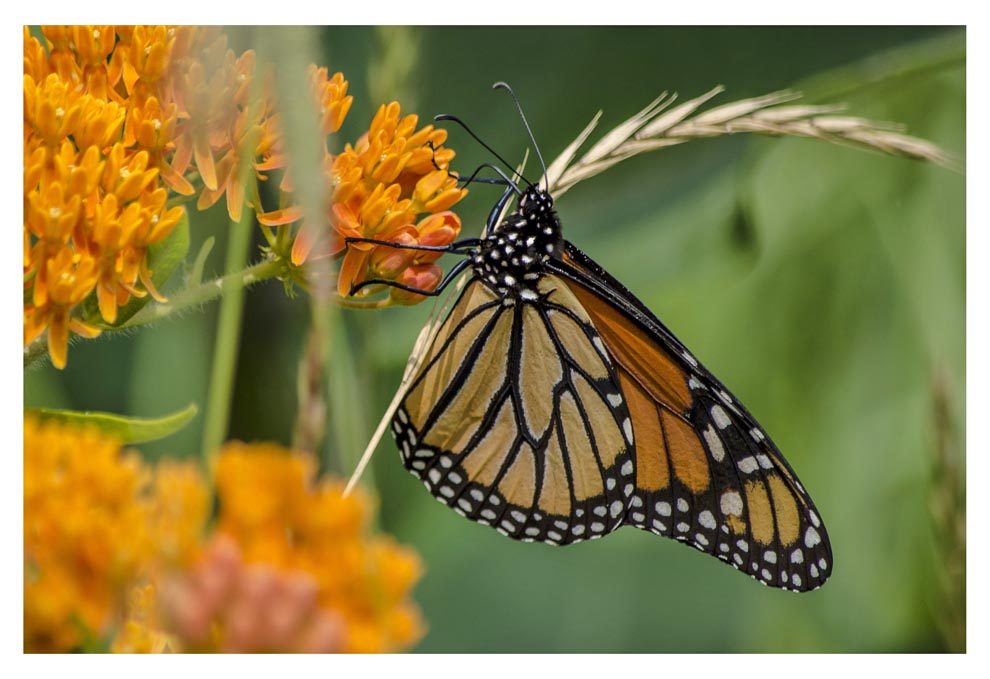

First of two parts
Erin Zylstra, a Michigan State University (MSU) postdoctoral research associate asks:
“Why is the eastern monarch butterfly disappearing?”
Between 2004 and 2018, changing climate at the monarch’s Spring and Summer breeding grounds has had the most significant impact on this declining population. In fact, the effects of climate change have been nearly seven times more significant than other contributors, such as habitat loss. The team published its report July 19 in the journal, Nature Ecology & Evolution.
‘“What we do is develop models to understand why monarchs are declining and what’s happening to biodiversity in general,’ Erin Zylstra said, the study’s lead author.
“Zylstra is a postdoctoral researcher in the Department of Integrative Biology and the Ecology, Evolution and Behavior Program, both in MSU’s College of Natural Science.
‘“A lot of it is not good news. But in understanding the reasons why a species is declining, there is a message of hope: There’s something we can do about it,’ said Zylstra. “‘We did this study not just to say what’s causing changes in the monarch butterfly population, but learn how we can make it better.
‘“Understanding the monarch decline and doing what we can to reverse it is important not just for preserving biodiversity, but because insects are prolific pollinators. The eastern population of monarchs migrates between Mexico and the eastern half of the U.S. and southern Canada every year, with Summer layovers in Michigan and other U.S. states. Since the mid-1990s, though, there has been a dramatic decline in their population, with worst-case estimates projecting that the current population is a mere 20% of what it was just a few decades ago.
‘“The mid-1990s through the mid-2000s saw the most dramatic decline, coinciding with a period when glyphosate weed killers became hugely popular in the agricultural industry. Farmers grew crops that were engineered to be resistant to glyphosate, allowing them to apply the chemical widely, decimating milkweed plants that are the sole host and food source for monarch caterpillars.
‘“The prevailing theory during that period has been that the loss of milkweed from agricultural areas was responsible for the severe declines. Since then, monarch populations have continued to fall. Although glyphosate-driven milkweed loss remained one possible explanation, other theories emerged over time. Today, researchers are divided on what’s stunting the monarch’s population.
‘“About a decade ago, however, Leslie Ries of Georgetown University and Elise Zipkin, now an associate professor of integrative biology at MSU, came to a realization. Researchers and volunteers were collecting an increasing amount of data that could help make a more definitive determination of what’s driving the monarch population decline.
“MSU Associate Professor Elise Zipkin:
‘“People have different hypotheses,’ said Zipkin, the senior author on the new study and director of the Ecology, Evolution and Behavior Program. ‘So we tried to come in as an impartial team, take the time and put all these pieces together to really parse out the contributions of various stressors.
‘“Part of what makes it so difficult to understand the decline is the eastern monarch’s complicated life cycle. These monarchs spend their winters, November through February, in central Mexico. When the weather starts to warm, they head north to the southeastern U.S., particularly eastern Texas.
‘“Once there, the adults breed, lay eggs, and then die. It’s the next generation that continues the migration, starting in about May, flying to the Midwest and parts of Canada, where they produce two to three more generations. The butterflies that develop in late August shut down their reproducti systems and spend their energy migrating south back to Mexico, where the cycle begins anew.
‘“With support from the National Science Foundation, the team analyzed data from more than 18,000 surveys of monarchs in different locations across the midwestern U.S., central Mexico, and southern Canada between 1994 and 2018. Most of these surveys were performed by local volunteers who helped count adult butterflies.
‘“Almost all of those data were not collected by professional scientists and that is really, really cool,’ Zipkin said. ‘There is no group of scientists out there that could collect all the data that we needed. But these volunteers go out every year and record data in a very structured way. That’s the only way we could do this analysis.”’
Continued at thevoice.us/three-theories-hold-credence-for-monarchs-diminution

